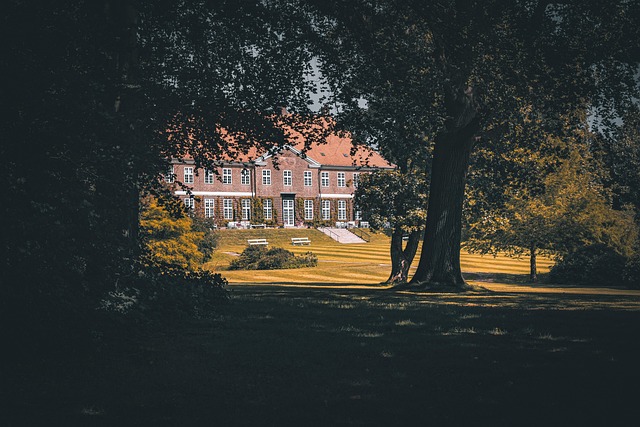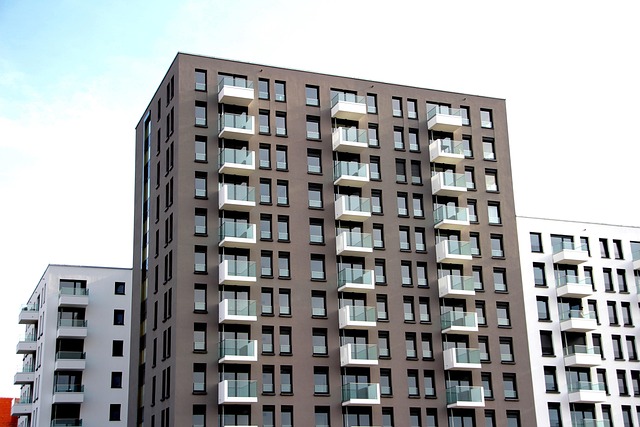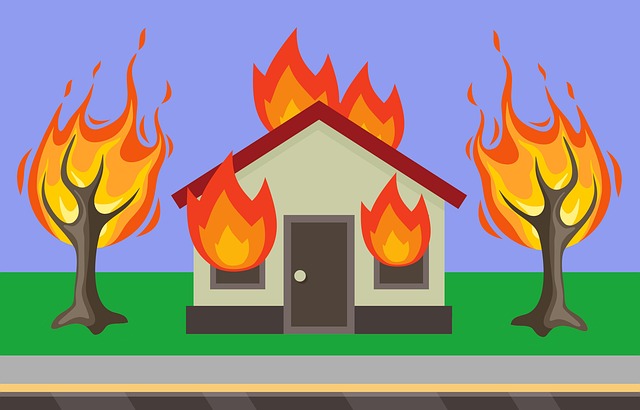Property and casualty insurance is an indispensable safety net for commercial building owners, offering financial protection against unforeseen events disrupting or damaging assets and operations. Combining property and liability coverage, these policies can be customized based on asset value, industry risks, and legal responsibilities to mitigate unique operational threats, ensuring business continuity and safeguarding investments. By addressing physical damage, liability claims, business interruption, and more, comprehensive property and casualty insurance is crucial for managing diverse risks and providing peace of mind during crises. Choosing a specialized insurer with a proven track record involves assessing their expertise, reputation, and transparent communication. Avoiding inadequate coverage or gaps in protection requires thorough asset valuation, customized plans, and professional guidance. Real-world examples underscore the importance of this insurance in safeguarding businesses from various risks, making it an indispensable component in today's commercial landscape.
In today’s dynamic business landscape, safeguarding your commercial building and its assets is paramount. Property and casualty insurance for commercial buildings acts as a shield against unforeseen perils, offering crucial protection for business owners. This comprehensive guide delves into the essentials of this coverage, from understanding key terms to navigating claims processes. We explore the diverse risks businesses face and provide insights on choosing the right insurer, avoiding common pitfalls, and leveraging policy benefits through real-world case studies.
Understanding Property and Casualty Insurance for Businesses

Property and casualty insurance is a crucial safety net for business owners, offering financial protection against unforeseen events that can disrupt or damage their operations and assets. At its core, this type of coverage combines property insurance—which shields against physical losses to buildings, inventory, and equipment—with casualty insurance, providing compensation for liabilities arising from accidents, injuries, or lawsuits on the premises. For commercial building owners, it’s an indispensable tool to safeguard their investment and ensure business continuity.
Business owners should understand that property and casualty insurance policies can be customized to fit the specific needs of their establishments. This adaptability allows them to choose coverage limits, deductibles, and additional provisions based on factors like the value of assets, potential risks in their industry, and legal responsibilities unique to their operations. By carefully assessing these variables, business owners can create a tailored policy that effectively mitigates risks associated with their commercial buildings and operations.
Why Commercial Building Owners Need This Coverage

Commercial building owners cannot afford to take chances when it comes to protecting their investments. That’s where property and casualty insurance for commercial buildings steps in as a vital safety net. This type of coverage is essential for safeguarding against potential risks and financial losses that could cripple a business.
These risks can manifest in numerous ways, from natural disasters like fires, storms, and floods to accidents involving employees or visitors, or even property damage caused by theft or vandalism. Property and casualty insurance provides financial protection against these events, helping commercial building owners cover the cost of repairs or rebuilding, as well as potential legal liabilities arising from incidents on their premises.
Key Components of a Comprehensive Policy

When it comes to protecting your business, a comprehensive property and casualty insurance policy is an indispensable tool. This type of coverage offers a robust shield against potential risks and perils that can disrupt or even put an end to your commercial operations. A key component includes protection for your physical assets, such as buildings, inventory, and equipment, which are often the backbone of any business. Insurers typically cover these items against damage from events like fires, storms, theft, and vandalism.
Additionally, a comprehensive policy should include liability coverage to safeguard against claims related to injuries on your premises, property damage caused by your operations, or other legal issues. This ensures that if a customer slips and falls, or if equipment malfunctions and causes harm, you’re protected financially. The specific details of these coverages can vary widely between policies, so business owners should carefully review their options to ensure they have the right protection tailored to their unique needs and assets, focusing on both physical structures and the intangible aspects that contribute to their commercial success.
Types of Risks Covered Under This Policy

Property and casualty insurance for commercial buildings covers a wide range of risks that business owners face. This policy typically includes protection against physical damage to the structure, such as fires, storms, or accidents, ensuring the building remains a functional asset. In addition, it offers liability coverage, shielding owners from financial loss due to claims of bodily injury or property damage sustained by others on their premises.
Specific risks addressed under this policy may include vandalism, theft, and civil lawsuits. It also often covers business interruption, helping owners recover lost revenue during periods when the building is unoccupiable. This comprehensive approach ensures that business owners are better equipped to manage unforeseen events, safeguarding both their investment in the property and their ongoing operations.
How to Choose the Right Insurance Provider

When choosing an insurance provider for your commercial property and casualty needs, it’s crucial to consider their expertise in insuring businesses like yours. Look for providers specializing in covering commercial buildings, as they will have a deep understanding of the unique risks associated with different types of properties. This specialized knowledge translates into more tailored policies that address specific concerns relevant to your business.
Additionally, assess their reputation and financial stability. Check reviews and ratings from independent sources to gauge customer satisfaction. A reliable insurance provider should offer transparent communication, responsive service, and a clear claims process. Ensure they have a solid track record of handling property damage or liability claims related to commercial buildings, demonstrating their ability to provide efficient and fair resolutions when needed.
Common Mistakes Business Owners Make When Buying Coverage

Many business owners, despite their best intentions, fall into common pitfalls when purchasing property and casualty insurance for their commercial buildings. One of the most frequent mistakes is underestimating the value of their assets. This often stems from not conducting a thorough assessment of the property’s worth, including both physical structures and valuable business equipment. As a result, adequate coverage levels may be neglected, leaving owners vulnerable to significant financial losses in case of damage or theft.
Another common error is assuming that standard policies cater to all needs. Every business operates uniquely, with specific risks and requirements. Owners might fail to customize their insurance plans according to factors like location, industry, and potential hazards. This can lead to gaps in coverage, especially for high-risk sectors such as construction or food service. Ensuring comprehensive protection requires a detailed review of the policy’s terms and conditions, along with professional guidance from insurers experienced in commercial property and casualty insurance.
Case Studies: Real-World Examples of Property and Casualty Claims

In the dynamic landscape of business, property and casualty insurance plays a crucial role in safeguarding commercial buildings and their occupants. To understand the significance of this coverage, let’s explore real-world examples of property and casualty claims. Case studies from various industries reveal the wide range of risks that businesses face, from natural disasters like fires and hurricanes to man-made incidents such as theft and vandalism.
For instance, a small retail store might experience a significant loss due to a burst pipe, causing extensive water damage to the building and its inventory. Conversely, a tech startup could face a cyberattack, resulting in data breaches that necessitate costly legal defenses and financial compensation for affected customers. These scenarios underscore the need for comprehensive property and casualty insurance for commercial buildings, which can provide financial protection and peace of mind for business owners facing unforeseen challenges.
Tips for Maximizing Your Commercial Property Insurance Benefits

To maximize the benefits of your property and casualty insurance for commercial buildings, there are several strategic steps to take. Firstly, conduct a thorough property assessment to ensure your policy accurately reflects the current value of your assets. This includes regular inspections to account for any changes or upgrades since your last policy renewal. By keeping your coverage up-to-date, you can avoid underinsurance gaps that may leave you vulnerable during a claim.
Additionally, carefully review your policy’s terms and conditions to understand what’s covered and what isn’t. Familiarize yourself with deductibles, limits, and exclusions to make informed decisions when filing claims. Regularly updating your risk management strategies by implementing safety measures and securing valuable items can also enhance your coverage’s effectiveness. These proactive steps will ensure that your commercial property insurance for business owners is a robust shield against potential losses.
